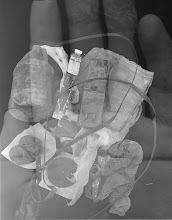Much time has passed since my last blog entry. After finishing up my first year of graduate school, I was in dire need of some down time, so traveling to Colorado and resting in the sun on some of my favorite southwest Michigan beautiful beaches was my way of slowing down a bit and enjoying things that I love. During this time, though, I made sure I was working with my hands somehow so my journey in the art world, be it by myself, with fellow artists, or with young artists, remained alive.
In the beginning, this blog was connected to a course I was taking in cyberpedagogy, where I explored the significance of digital technology in art education. At this time, however, I was also interested in creating a blog that acted as a resource where my ideas, experiments, and objects that interest me come together to explore how I may merge my own studio practice with critical pedagogy. As an artist interesting in teaching, I am constantly questioning how I may maintain my own studio practice while engaging youth in exploring the arts. I am excited to help young artists make meaning and discover ways to critically explore their surrounding worlds. And by doing this, I can't help but ponder the notion stating that artists who teach in public schools are often not truly artists, but people who can't do, but teach. Do artists involved in teaching necessarily need to be professors to maintain an active studio practice or sustain a strong connection with the art world?


Last month I worked at an art center in St. Joseph, Michigan that strives to expose youth to the professional world of art and art making. Known as The Box Factory, this art center is full of professional working artists and there studios, and the students who enter this place have the opportunity to not only gain raw art experiences by working in and around these studios, but to become directly engaged in the materials, processes, and concepts used in contemporary art. This experience has lead me to ponder how the public school classroom can become more of a center of art then just another course listed within public education state requirements. If we start to refer to our public school art classrooms as working studios with teaching artists, how will this change our outlook on public school art education?
These questions don't necessarily have a simple answer, and have been asked many times over, however, I do feel these questions can help artists like me to remember that merging our personal studio practice with education has the potential of creating an interesting intersection. This intersection is where the contemporary art world meets public education, an aspect that remains significant in our engagement with critical pedagogy. The hard part is finding the balance.


No comments:
Post a Comment
put thought here....